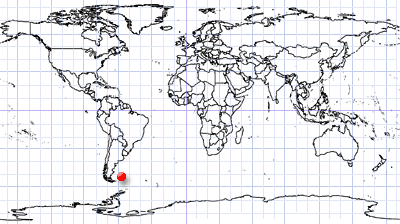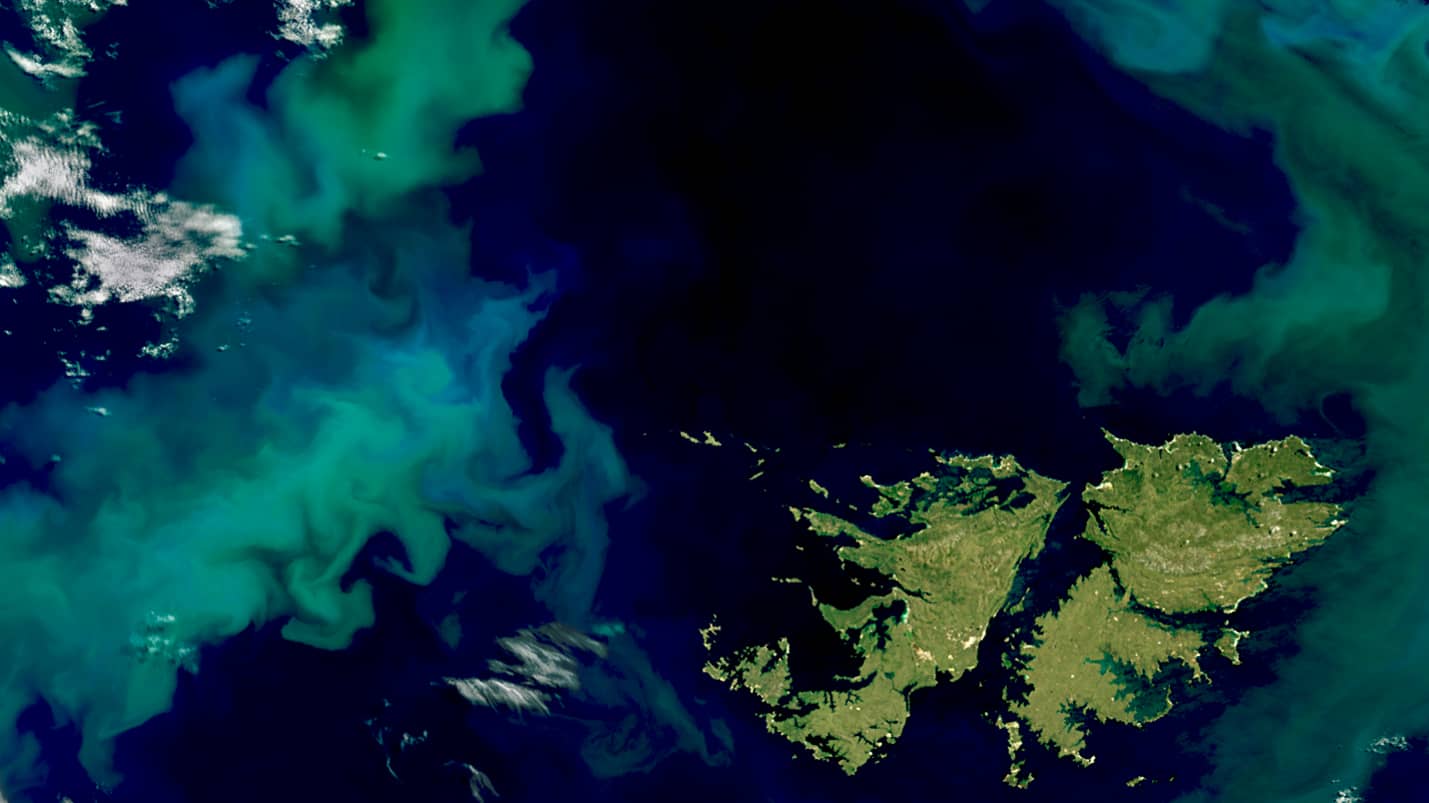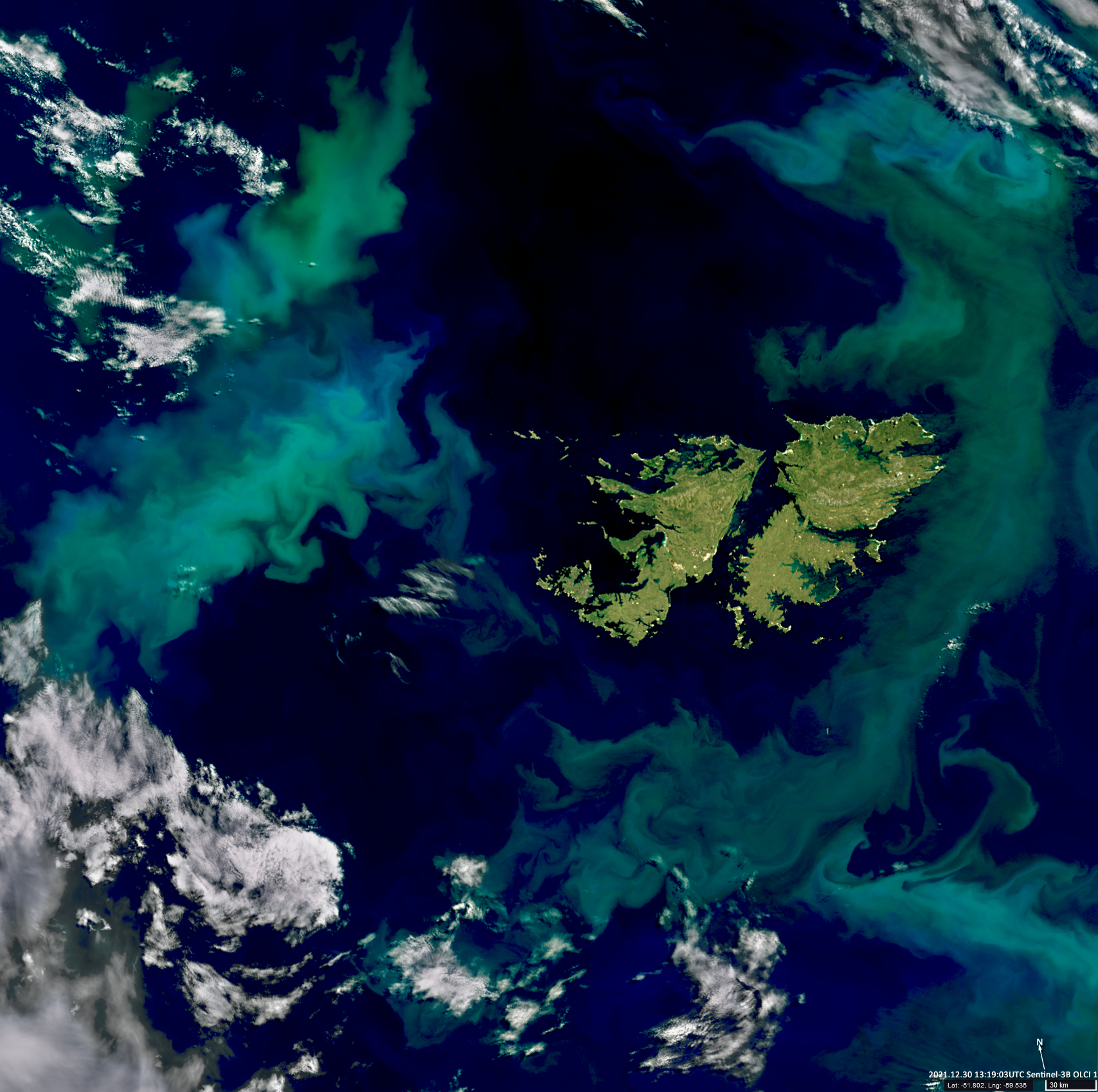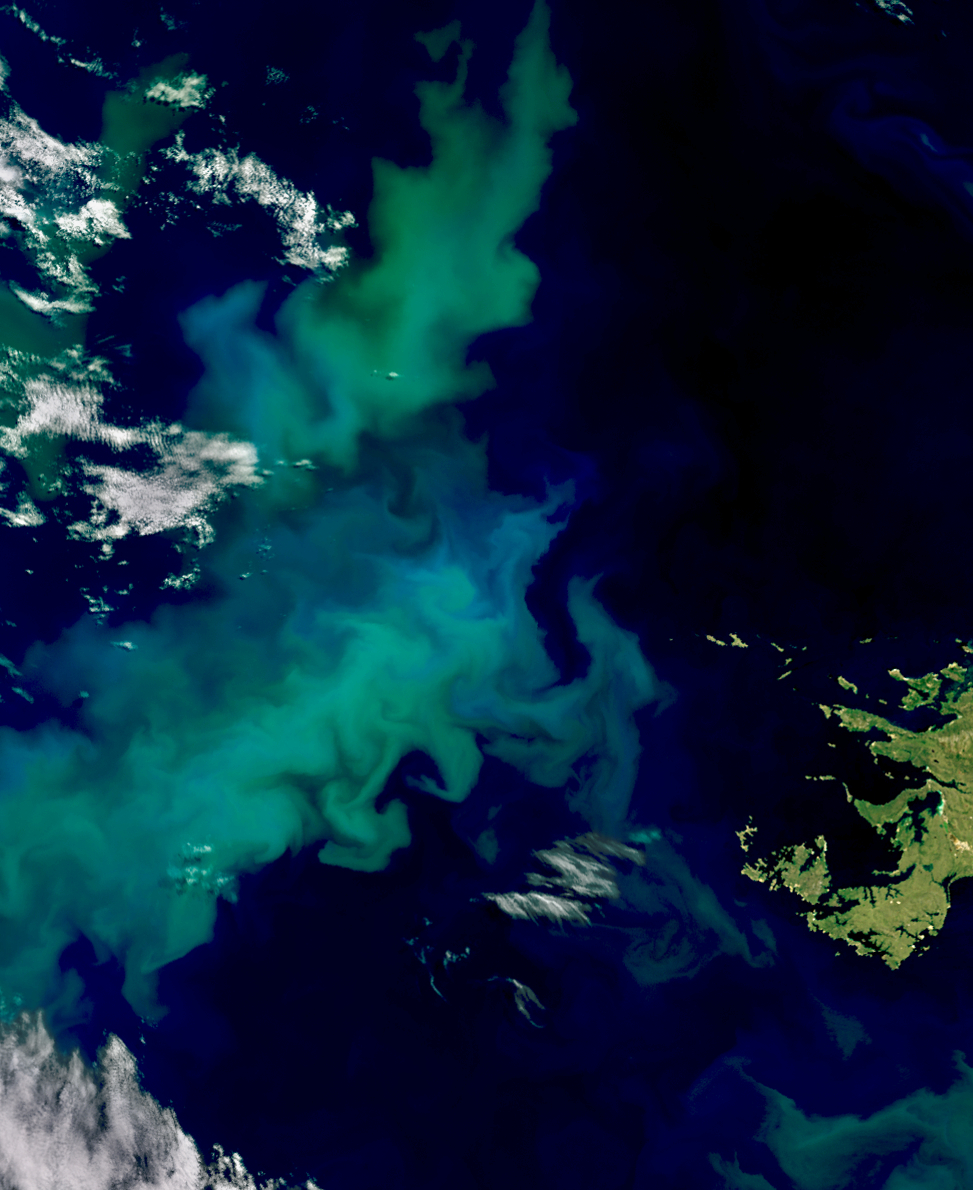
Phytoplankton blooms around the Falkland Islands
Falkland Islands | Argentina
Date of acquisition: December 30th, 2021 | 13:19:03 UTC
Sensor: Sentinel-3B OLCI 1
Coordinates: 51.8° S, 59.5° W
The Falkland Islands or Malvinas are located ~400 km east of Argentina in the southern Atlantic. This image catches a rare situation where the islands are completely cloud-free.
The swirling green and blue areas are caused by densely concentrated phytoplankton growing in the upper layers of the ocean. These microscopic organisms thrive in the cool, nutrient-rich waters off the coast of southern Argentina near the Falkland Islands. In spring and summer, populations of the algae in the South Atlantic often explode into enormous blooms, which float with the meandering ocean currents.
Nutrients transported by rivers promote phytoplankton growth but also dust from Patagonia, carried offshore and diffused on the ocean surface by strong westerly winds contribute to the nutrient budget in the water. Phytoplankton blooms are stimulated by abundant fronts where water masses with distinct temperatures, saltiness and nutrients meet. Along a front, the rising of less-dense water mass can carry nutrients up to the surface, where phytoplankton has ample sunlight to intensify their growth.
Because phytoplankton builds the base of the marine food chain, regions of the ocean supporting large blooms tend to also have a large and diverse population of fish and other animals.





